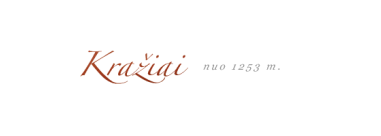Kražiai (Polish: Kroże, Russian: Кражяй, pre-revolutionary Крожи, Yiddish: קראָזש Krozh or Krozhe) is a town in Lithuania, located in the Kelmė district municipality, between Varniai (32 km) and Raseiniai (44 km), on the Kražantė river. The old town of Kražiai is an archeological and urban monument.
The population in 1959 was 998; ca. 2,000 in 1939; 1,761 in 1897. The town has a secondary school and is a rural community centre. Under the prewar Republic of Lithuania, Kražiai was the township seat of the county of Raseiniai. After World War II it was assigned to the Soviet administrative district of Kelmė.
Kražiai is one of the older settlements in Samogitia. Many barrow graves and fortress hills are located in its vicinity. The name of the locality is first mentioned (asCrase) in a 1257 document of King Mindaugas, by which a part of Samogitia was assigned to the Teutonic Order. Vytautas the Great during his first years of rule ceded Samogitia to the Order; the regent he appointed lived in Kražiai. After the Battle of Grunwald in 1410, when Samogitia regained its freedom, Kražiai became the district centre. In the 15th century Kražiai was the christening centre of Samogitia. In the 17th century it became one of the Catholic centres of the country. There were several monasteries, and the Jesuits established Kražiai College.
With the transfer of the gymnasium to Kovno in 1848, and owing to a devastating fire the following year, the town lost its importance. After the building of theLibau-Romny Railroad in 1880 it became still poorer, and many families emigrated to the United States, Africa, and Australia.
The town is remembered in Lithuania as the site of the „Kražiai Massacre“ of 1893. As part of its campaign against Lithuanian nationalism focused on Catholicism, the Russian government decided to tear down the local Catholic monastery church. After petitions to save the church were rejected, people began to gather at the church to prevent the removal of sacred objects. This alarmed Kaunas Governor Nikolai Klingenberg, who led a force of police and Cossacks that invaded the church and brutally drove the people out and into the nearby Kražantė River where six of them drowned. Afterwards, a number of Catholics were publicly flogged and about 70 were brought to trial. These events enhanced the development of national consciousness and increased the people’s alienation from Russia and were successfully exploited by anti-Russian and anti-Tsarist propaganda.

